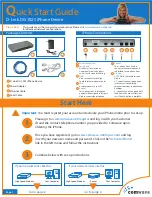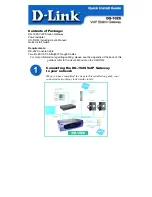
Installation & Operation Manual
516
Document # LTRT-92224
Mediant 8000
38.8
Configuring TDM Clock Synchronization
In a traditional TDM service network, such as PSTN, both ends of the TDM connection
must be synchronized. If they are not synchronized, voice frames are either dropped
(to prevent a buffer overflow condition) or inserted (to prevent an underflow condition).
In both cases connection quality and reliability is affected.
The Mediant 8000 Media Gateway supports different Clock Synchronization modes.
The following clock synchronization modes are available:
Standalone Board Sync mode
– each Media Gateway board synchronizes itself
by the clock received on one of the PSTN interfaces (OC-3/STM-1 optical links
T3 trunks or E1/T1 trunks) connected to it; there is no global clock
synchronization between different Media Gateway boards. For more information,
refer to .'Stand Alone Board Clock Mode' on page
Timing Module BITS Sync mode
– all Media Gateway boards are synchronized
with dual BITS (Building Integrated Timing Source) trunk clock sources
connected to dual SA-1/RTMs; for more information, refer to 'Timing Module BITS
Sync Clock Mode' on page
Timing Module Line Sync mode
– all Media Gateway boards are synchronized
by up to four “reference” OC-3/STM-1 links or T3 trunks connected to the specific
Media Gateway boards; for more information, refer to 'Timing Module Line Sync
Clock Mode' on page
The following sections describe each of the available clock synchronization modes in
details. Detailed instructions are provided on connecting to the external hardware and
configuring the Media Gateway software.
38.8.1
Stand Alone Board Clock Mode
In Standalone Sync clock mode, each board synchronizes its own clock. The clock
may be derived from the following sources:
PSTN interface (OC-3/STM-1 optical links, or E1/T1/T3 trunks)
Internal board's clock reference
There is no global clock synchronization across different Media Gateway boards.
Note:
Standalone Board Sync clock mode is primarily intended for initial Media
Gateway setup in the lab environment. For field deployments, it is strongly
recommended to use one of the available synchronized modes instead (e.g. Timing
Module BITS Sync mode. For more information, see Section 'Timing Module BITS
Sync Clock Mode' on page
Summary of Contents for Mediant 8000
Page 2: ......
Page 33: ...Part I Hardware Overview This part describes the hardware overview of the Mediant 8000 chassis...
Page 34: ......
Page 90: ......
Page 158: ......
Page 264: ......
Page 546: ......
Page 775: ...Part VI Maintenance This part describes the Mediant 8000 maintenance procedures...
Page 776: ......
Page 834: ......
Page 879: ...Part VIII Appendices This part describes additional Mediant 8000 configuration procedures...
Page 880: ......
Page 924: ...Media Gateway Mediant 8000 www audiocodes com Installation Operation Maintenance Manual...
















































